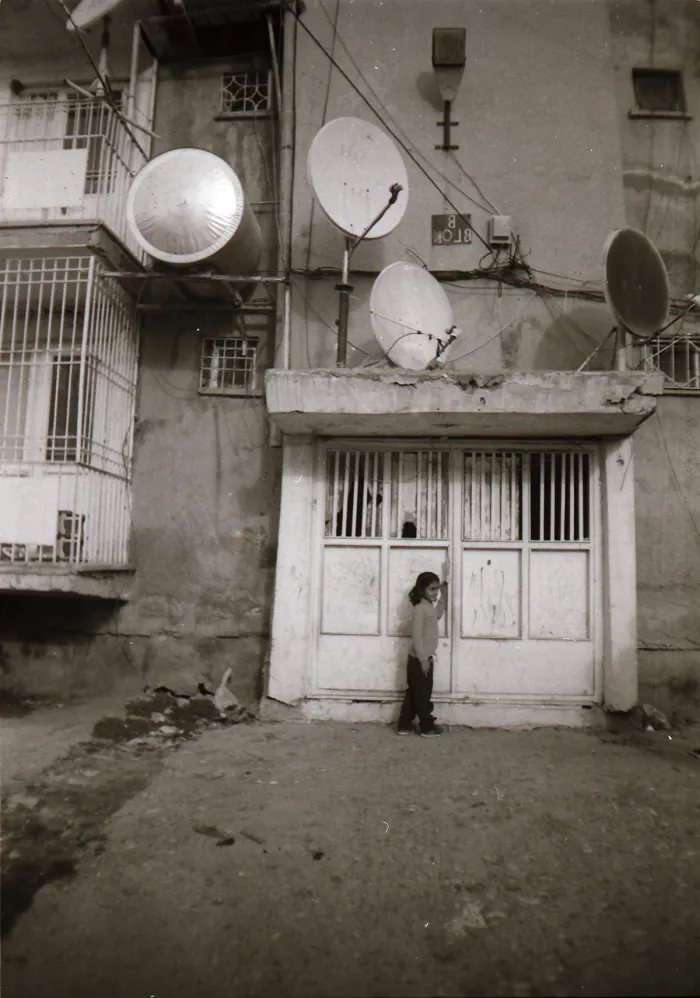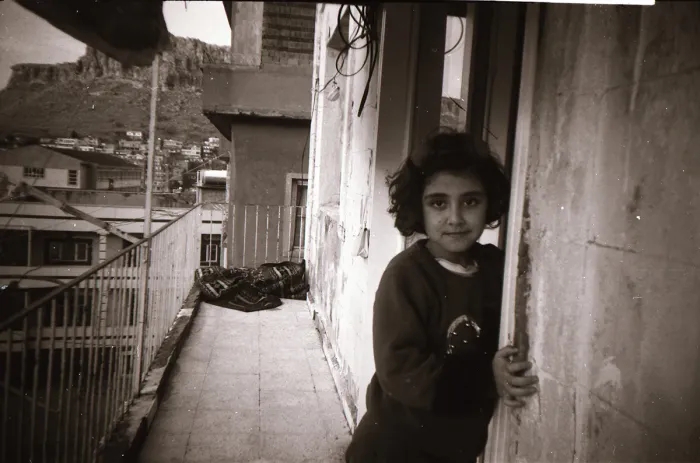
Update: Sirkhane Darkroom will be traveling to Adiyaman, and Kahramanmaras to work with the children who were displaced by the earthquakes. Here’s how you can help!
Ceylan, her teacher asked Serbest Salih “Is it magic?” the first time Ceylan entered the darkroom. Ceylan, her mother, and family hail from Qamishli in Syria. They now live in Turkey. She began her photography journey through Sirkhane Darkroom a traveling photography class based in Turkey just kilometres from the Syrian border. There are many students who have been displaced from their homes by war.
Ceylan, who was enchanted by the experience of being in a darkroom for the first time, asked Salih: “Can I also try it?” She did, of course. In one of the photographs she took, another child was playing in the snow. A group of people were bundled behind him, as snowflakes continued to fall.
The students at Sirkhane DARKROOM come from Syria, Iraq and Turkey. Some are unable to attend regular school. Salih teaches them how to take, develop and print 35mm photographs. They follow in the footsteps early pioneers of street photography like Henri Cartier Bresson. Students experiment with pinhole cameras and instant film.
Some of them document their lives, while others choose to photograph the lives of friends, family members, and neighbors. Others have captured their parents going about their daily lives. The most exciting part of the process for many students is seeing the final results on paper.
Salih, along with his team, have been running a mobile darkroom/caravan in recent years. This allows them to go to villages and neighborhood to teach children who are underserved. After conflict and uncertainty, the children can express themselves in a free way through photography, and they also learn life skills. Some of these children’s friendships inspired their parents, across cultural boundaries, to make new friends.
Students at Sirkhane DARKROOM wrote the book I saw the air Fly published by MACK. It is available right now. The life of a refugee is not easy. There are signs of trauma that can be seen in photographs, such as an army helicopter arching in the sky. But the photos teach us about the importance of play and joy. Salih views the book as a tribute to happiness.
